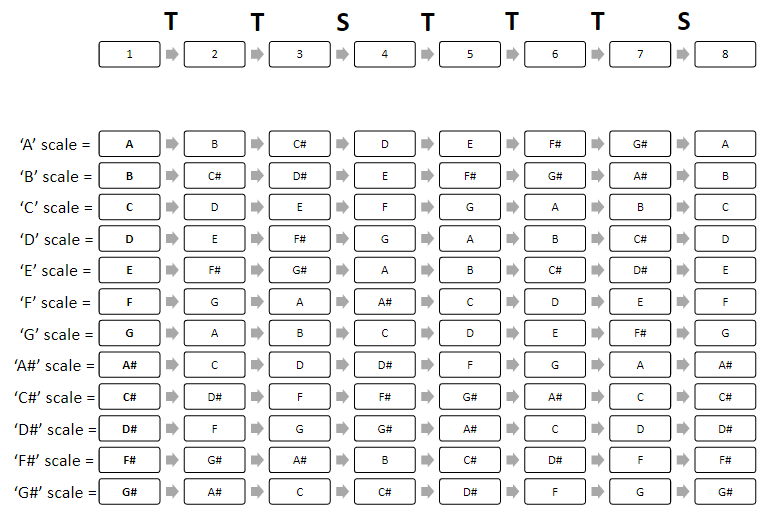Understanding the Major Scale: A Foundation for Musical Mastery
The Major scale is the cornerstone of Western music and one of the most important scales that musicians across all genres must learn. It is a seven-note scale built on a distinct pattern of whole steps (W) and half steps (H), arranged in the following order: W-W-H-W-W-W-H. This pattern gives the Major scale its characteristic bright, uplifting, and harmonious sound, making it a go-to choice in countless songs and compositions.
Example of the C Major Scale:
In the key of C Major, the scale follows this sequence of notes: C – D – E – F – G – A – B – C
Here, each note is separated by the precise intervals of whole and half steps, with no sharps or flats, making it one of the easiest scales to grasp for beginners. But its simplicity hides its deep significance in music theory, as it is used in everything from basic melodies to complex compositions.
Why Learn the Major Scale?
- Builds Chords & Harmony: Every chord progression, key signature, and melody in music can be traced back to the Major scale. The chords built from each note in the Major scale follow a predictable pattern of major, minor, and diminished chords, which forms the foundation for harmony in music.
- Essential for Improvisation & Composition: Whether you’re crafting a new song or improvising during a jam session, knowing the Major scale unlocks the potential for creative freedom. It serves as a musical roadmap, helping musicians navigate key signatures and chord progressions with ease.
- Universal Application: The Major scale isn’t just for classical music – it’s used in pop, rock, jazz, blues, and even folk music. Understanding how it works opens up the ability to play or compose in any genre.
Learning the Major Scale on Guitar
For guitarists, the Major scale can be played across the fretboard using a variety of shapes and positions. Practicing these shapes will not only help you get familiar with the scale but also enhance your ability to play solos, lead lines, and create harmonious chord progressions.
T= Tone
S= Semi-tone

